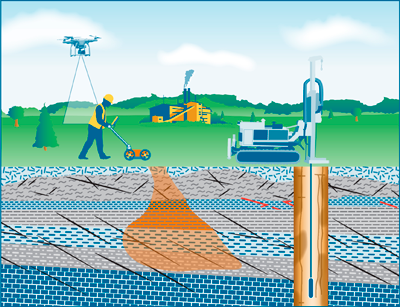 ITRC ASCT Training Videos
ITRC ASCT Training Videos
The Advanced Site Characterization Tools (ASCT) Team
has created a series of short videos to help you navigate the
document and provide examples of the application of these
tools. The videos include:
- An Introduction to ASCT and the Web-Based Technical and Regulatory Guidance Document.
- An example of the application of Direct Sensing Tools (Section 3) using a LIF Survey with UVOST® to develop a representation of an LNAPL Plume.
- A discussion of the 3-D representation of the LNAPL Plume
- An example of the application of Borehole Geophysics tools (Section 4) using a suite of geophysical logs including borehole caliper, fluid temperature/resistivity, natural gamma, Optical Televiewer (OTV), Acoustic Televiewer (ATV), and Heat Pulse Flowmeter (HPFM) to evaluate the bedrock fracture geometry and groundwater quality, and to identify hydraulically active fractures.
- An example of the application of Surface Geophysics tools (Section 5) using seismic refraction, electric resistivity, and multichannel analysis of seismic waves to provide data to locate monitoring well locations in fractured bedrock.
- Example uses of Remote Sensing tools (Section 6).
Click here to download the entire document.


